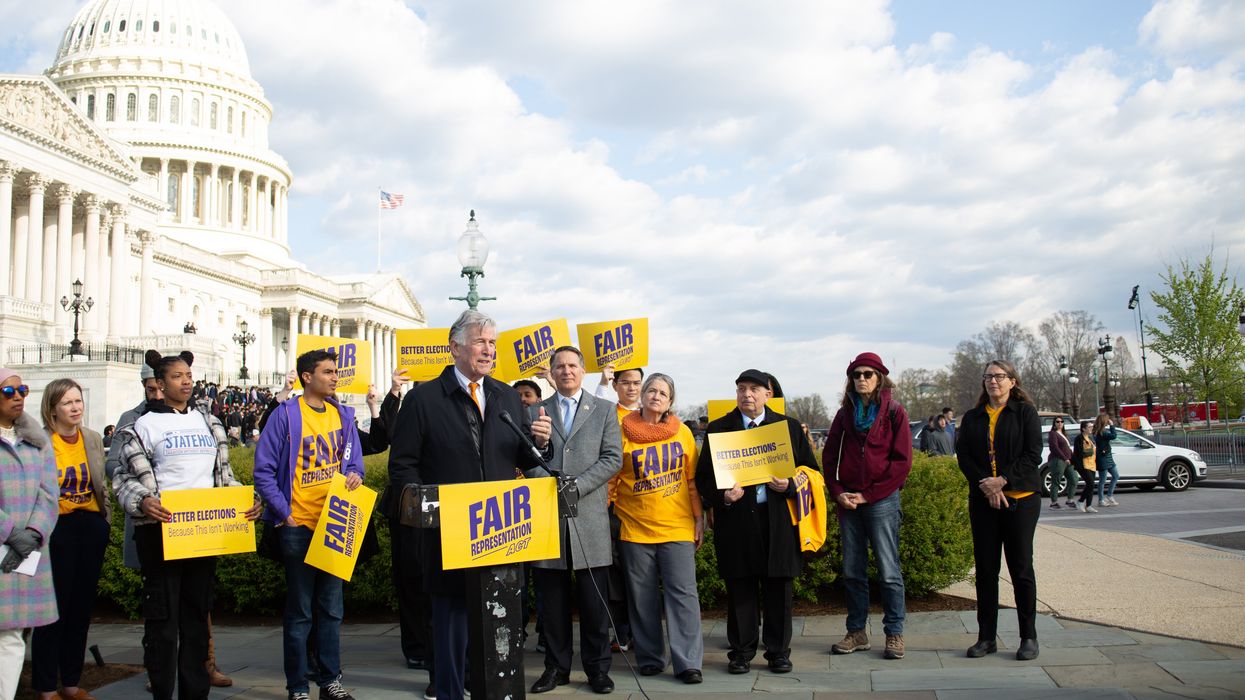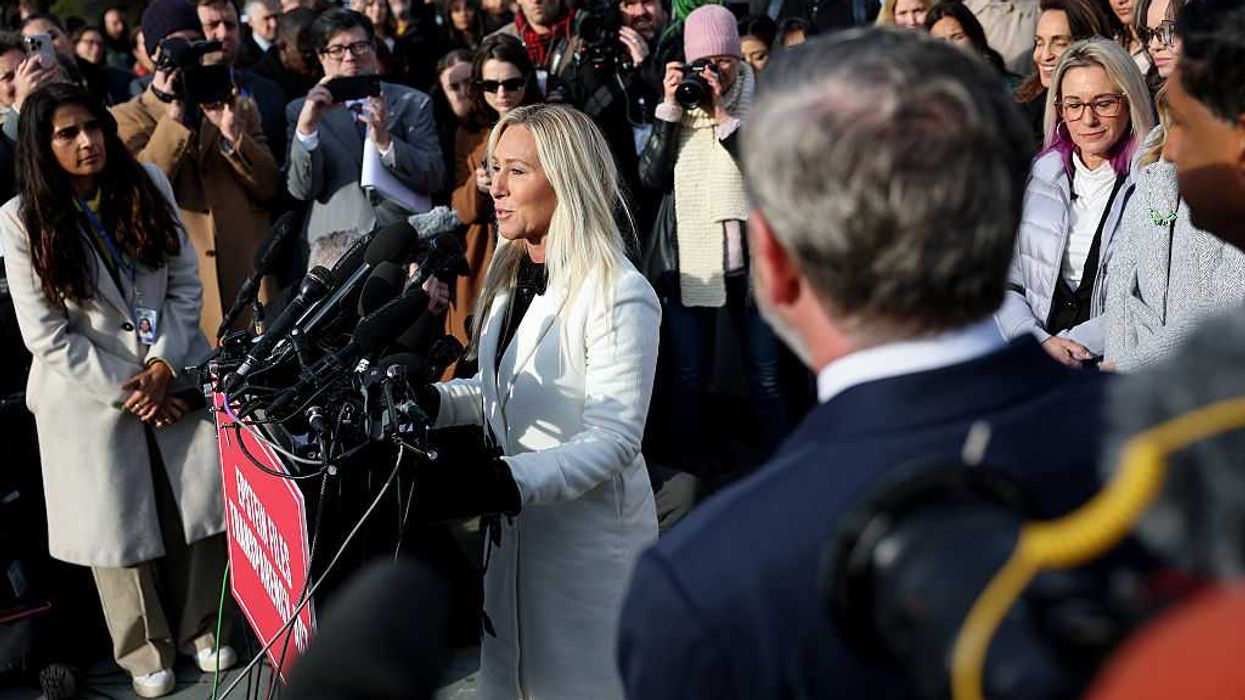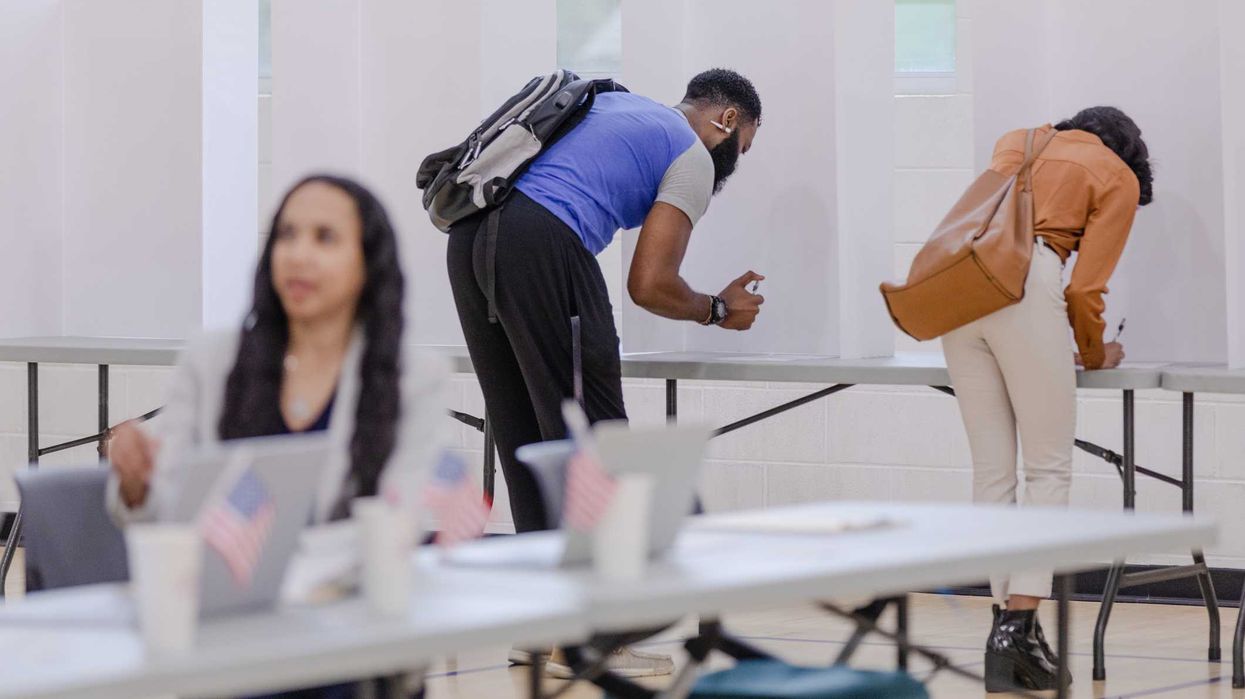Meyers is executive editor of The Fulcrum.
Election reform advocates have many suggestions for improving the system. Among the most popular ideas are ranked-choice voting and redistricting reform – two major components of a bill introduced by a group of House members last week.
On March 20, Rep. Don Beyer (Va.) and a half-dozen of his fellow Democratic lawmakers presented the latest version of the Fair Representation Act, which would require the use of RCV for all congressional elections, establish multimember House districts, and institute rules to prevent partisan and racial gerrymandering.
"The Fair Representation Act offers vital solutions to the hyper-partisan gerrymandering and lack of electoral competition that has allowed extremist ideologies to hijack our political discourse and sewn public distrust of our political system,” Beyer said. “Our bill would implement critical reforms to strengthen our electoral system, ensure every voter has their voice represented, and restore public trust.”
This is the third iteration of the bill, which has yet to make it through the House of Representatives. And with Republicans controlling the chamber, the Democratic-backed bill is not going to pass this year either. But the immediate goal is awareness, not enactment, according to outside supporters of the bill.
“It’s a long-term strategy. Every time, [the bill] has been getting more cosponsors and more attention,” said Ryan Suto, senior policy advisor at the nonpartisan election reform group FairVote. “We see this Congress as an opportunity to have more converastions and socialize it more.”
Now that the latest version has been formally introduced, the co-sponsors and advocates will begin the campaign to add more supporters. In addition to Beyer, the bill has the backing of Maryland Rep. Jamie Raskin (who serves as co-lead) and five additional original co-sponsors: Reps. Earl Bluemnauer (Ore.), Ro Khanna (Calif.), Barbara Lee (Calif.), Jim McGovern (Mass.) and Scott Peters (Calif.).
Prior to reintroducing the bill, that group made two “tweaks,” according to Deb Otis, FairVote’s director of research and policy, that are designed to grant states more flexibility in implementing the measure’s requirements.
Earlier versions of the bill would have required states to assign congressional redistricting to independent commissions. But the new bill does not set a requirement for who draws the lines; instead, it requires the chosen body to follow a series of guidelines, including: equal population counts across districts, compliance with the Voting Rights Act of 1965, representation for minority communities, and preventing single-party dominance in multimember districts.
Only a handful of states have truly independent redistricting commissions. In most states, lawmakers have some say, either by producing the maps within the state legislatures, retaining the authority to approve (or not) the independent commissions’ work, or by appointing political operatives to redistricting bodies. The states would continue to assign redistricting duties as they see fit, but must meet the bill’s anti-gerrymandering criteria.
This shift, according to Otis, brings that portion of the bill in line with the Freedom to Vote Act, a sweeping election reform measure introduced by Democratic lawmakers in 2022.
The other significant change involves the threshold for creating multimember districts.
Currently, each House district is represented by one lawmaker. But in a proportional, multimember system, more than one person would be elected in order to grant minority voices a share of the representation – needing as little as 17 percent of the vote to gain a seat. Take, for example, Massachusetts. About one-third of the state’s voters are Republicans, but all of its House members are Democrats because that party has a majority in each district. In a multimember system, Republicans would be able to win a proportional share of the seats and have a voice in the House.
In the first two iterations of the Fair Representation Act, any state that currently has five or fewer House members would instead have one at-large representative, with larger states moving to the multimember design. The language in this year’s bill would deploy the multimember structure to states that have a minimum of seven House members under the current system. That change was made, according to Otis, because certain states – such as Oregon – would not be able to meet the requirement for minority representation at the lower level.
The third component of the bill, ranked-choice voting, is being adopted more and more by states and cities. (FairVote regularly calls RCV the fastest-growing election reform in the country.)
In a standard election, the person with the most votes wins, even if they are not picked on a majority of the ballots. In an RCV election, voters rank the candidates in order of preference. If someone gets a majority of first-choice votes, they win. If not, the person with the fewest first-place votes is eliminated and those ballots are redistributed to voters’ second choices. The process continues until someone has a majority.
RCV advocates say, in addition to ensuring elected officials are supported by a majority of voters, such a system will lead to more civil elections and bipartisanship because candidates will need to appeal to more than their base voters in order to secure second- or third-choice position on ballots.
Now that the bill has been introduced, the co-sponsors and outside advocates will be trying to drum up support on both sides of the aisle.
“In this Congress it’s been difficult to do anything in a bipartisan manner,” Suto said about finding Republican support. “But those are doors that we’ll knock on.”
Other organizations, such as RepresentWomen and the Interfaith Alliance, will join the multiprong effort, which will point to past successes as part of the pitch.
“A big part of FairVote’s strategy is promoting where these reforms are a success in other parts of the country,” said Otis.
Two states – Alaska and Maine – use ranked-choice voting in their elections. Maine uses it for state-level primaries and federal general elections. Alaska uses it for its “top four” system:
All candidates for office run on one primary ballot. The four with the most votes, regardless of party, advance to the general election, which uses an RCV ballot. Reform advocates and election watchers say that system led to the election of centrist lawmakers, rather than more extreme candidates, in 2022.
Ranked-choice voting is also used in dozens of cities and states around the country, including New York, San Francisco and Salt Lake City. Voters in Portland, Ore., will use RCV for the first time this fall.
Supporters hope to win further advancements in November, as RCV proposals will be on the ballot in Nevada and Oregon. “We’re also keeping an eye on Colorado, Idaho and Washington, D.C.,” said Otis. “It could be up to a dozen cities.”




















